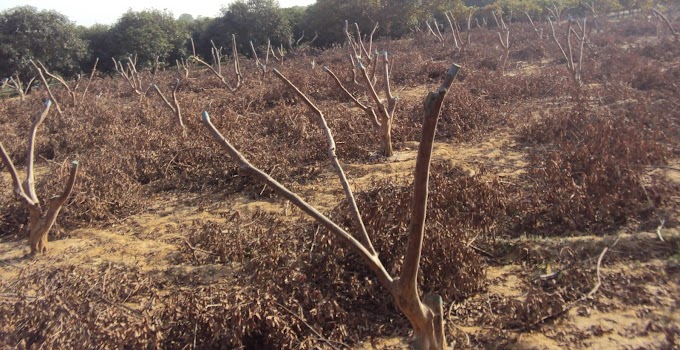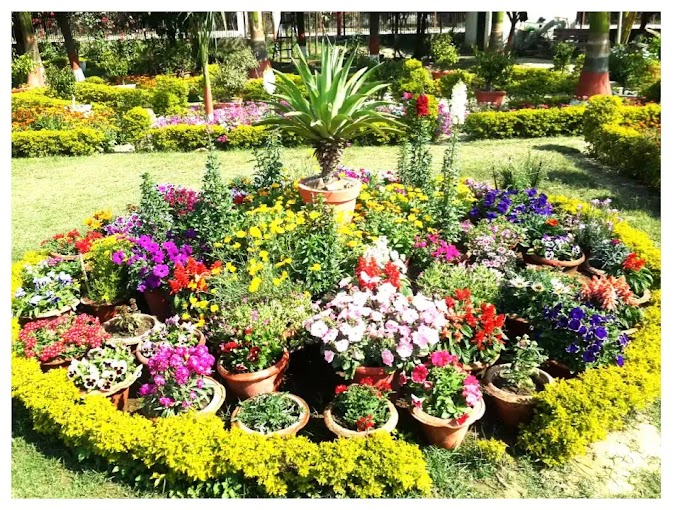In 1962 a Japanese pathologist E. Kurosawa noticed
abnormally tall rice plants bearing no seeds in paddy fields. Japanese farmers
were calling such abnormally taller rice plants to be infected by ‘Bakane
disease’. Latter on it was found that bakane disease was caused by a fungus Gibberella
fujikuroi because sterile extract of the fungus caused bakane disease in normal
rice plants. The3 extracted from
fungus is common and is more reactive that GA1, GA2 and
GA4 because GA3 is more unsaturated from of Gibberellins
than GA1, GA2 and GA4. There are compounds
although have no gibbane skeleton but show biological effect similar to
gibberellins for examples: Phaseolic acid an extract of Phaseolus seeds, Helminthosporal
an extract of fungus Helminthosporium sativum and Ecdysone a steroid hormone of
insects.
Hormone produced by G. fujikuroi and caused abnormal growth of
rice plants, was isolated and named gibberellins after the name of Gibberella
fujikuroi by Yabuta and Sumuki in 1938. Gibberellins are present in three free,
conjugated and bound forms in the plants. The conjugated and bound gibberellins
are more readily soluble in water than free gibberellins. So far more than 112 forms of gibberellins are
known and the difference in number and position of functional groups
differentiate gibberellins from each other. GA
 |
| Gibberellins |
Biosynthesis
The biosynthesis of gibberellins starts from acetic
acid of which three molecules link together and form one molecule of the
mevalonic acid (MVA). The mevalonic acid converts into a 5 carbon compound
isopentenyl- pyrophosphate (IPP). The IPP condense and yields a diterpene
called geranyl geranyl pyro phosphate (GGPP). The diterpene containing four
isoprene units is a precursor of gibberellins which terpenoids built up from
five carbon isoprene units. The different gibberellins are synthesized from
diterpene. First GA12 synthesizes in the plants then other types of
gibberellins are formed from GA12.
The young leaves,
tips of shoots, fruits pericarp, developing fruits and seeds are the major
sites of gibberellins biosynthesis from which gibberellins are transported
throughout the plants in non-polar (Multidirectional) fashion. Seeds produce
gibberellins but not able to transport while gibberellins produced in shoots
and leaves are inter converted into different forms in roots.
Antagonists of gibberellins
The certain compounds are anti-gibberellins and
retard the plant growth by inhibiting the gibberellins biosynthesis. These
compounds are termed retardants such as CCC [(2-Chloroethyl) trimethyl ammonium
chloride], Phosphon (2,4-dichlorobenzyl-tributyl phosphonium chloride),
AMO-1618 [ammonium(5-hydroxycarvacryl) trimethyl chloride piperidine
carboxylate ] and paclobutrazol.
Role of gibberellins
- Stimulation of shoot growth
Gibberellins promotes the elongation of shoots, stem
internodes, hypocotyls, coleoptiles and epicotyls. The application of gibberellins
on the rosette plants result marked stem elongation. Gibberellins stimulate the
actively of protease enzyme which promotes the hydrolysis of proteins into
amino acids. Tryptophan an amino acid produced due to protein break down and
increases the level of natural auxin in gibberellins treated plants because
tryptophan is a precursor in auxin biosynthesis.
- Effect on genetic dwarfism
The genetic dwarfism of the plants occurs due to
shortening of internodes not due to decrease number of internodes can be reverted
with the application of the gibberellins.
- Stimulation of seed germination
The gibberellins increase the activity of hydrolytic
enzymes like amylase which increases the conversion of starch to sugars and
thereby enhance the availability of stored food materials. It promotes the seed
germination and seedling growth.
- Induction of flowering
Application of gibberellins induces flowering in
long day herbaceous plants even under short day conditions whereas it inhibits
flowering in some woody plants like Apple and Bougainvillea. The exogenous
application of gibberellins was found to be unable to induce flowering in short
day plants.
- Sex expression
The gibberellins applied exogenously increase the
number of female flowers in certain crops like bean and cucumis.
- Development of parthenocarpy
Application of gibberellins is reported to induce
the parthenocarpy in apples, guava and prunus.
- Delaying of senescence
The
gibberellins delay the senescence and ripening for example in banana and citrus
fruits.








